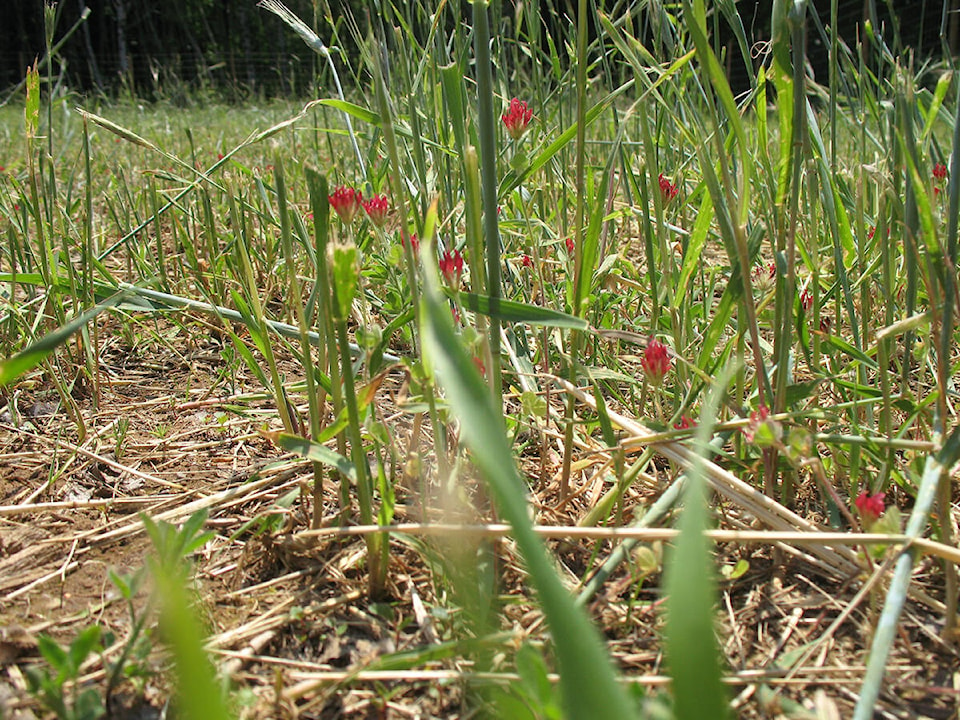By Mary Lowther
The great chef August Escoffier said it was possible to make bad food with good ingredients, but not to make good food with bad ones. The same goes for gardening; to grow good food we must use good soil, and that requires nutrients that nourish both our crop and its consumer. As we harvest each year we extract those nutrients for ourselves, which depletes the soil for the next crop. There are many things we can do to replenish our gardens, adding fertilizers and other amendments, and we can grow cover crops.
A cover crop, also called green manure, is grown not to eat but to retain nutrients in the soil while adding their own to the mix. Clover, for example, has been traditionally used as a spring and summer cover crop, a legume that adds nitrogen and is easy to dig under. White clover blooms in the spring, making it an ideal cover crop for early pollinators like mason bees, but it is invasive and may not die off readily when dug under. Other types of clover bloom at different times and all of them add nutrients to the soil and feed pollinators all summer.
To attract pollinators I let my cover crops flower before cutting them down and digging them under. Gardening experts advise us to sow two or more types of plants at one time to add a greater variety of the nutrients they produce or pull up from the soil itself, and I have generally followed their advice. This year, however, I’m only going to sow one variety at a time so that it has a chance to flower before I sow the next. Previously, when I sowed them at the same time, when one flowered I had to dig both crops under so the second type didn’t have time to flower. I’ll make sure that different succeeding cover crops are used on each bed, providing a variety of nutrients to the garden as a whole.
I’ve only sown clover on bare beds between crops but this year I’m going to try a couple of suggestions by gardening authors. Marjorie Harris, in her book Favorite Garden Tips, says: “Clover makes a sensational living mulch — interplant with vegetables and fruit. If it springs up in your lawn, don’t worry, it adds nitrogen to the soil.” Perhaps clover would make a better lawn than grass, given how it needs less mowing since it grows so low.
Sally Jean Cunning of Cornell Cooperative Extension weeds her corn only once, a month after planting it, then sows white dwarf clover under it and lightly rakes it in. She says: “Since corn has so many surface roots, it’s hard to weed without damaging the crop”. Some use clover under brassicas like cabbage as well once they’ve reached several inches. Clover chokes out weeds, doesn’t affect the crops, and once the crops have been harvested, takes over to become a cover crop.
A friend of ours mentioned that a farm he grew up on had white clover throughout the orchard, and this seems like a smart idea because they’ll attract early bees to the fruit trees. Unfortunately its invasive nature may preclude our planting it there — we’ll see. Crimson clover, a summer bloomer, is recommended by many gardening authors, so perhaps I’ll stick with that variety.
Please contact mary_lowther@yahoo.ca with questions and suggestions since I need all the help I can get.
